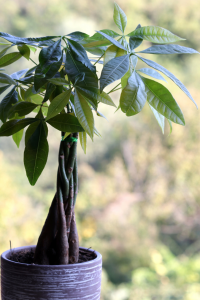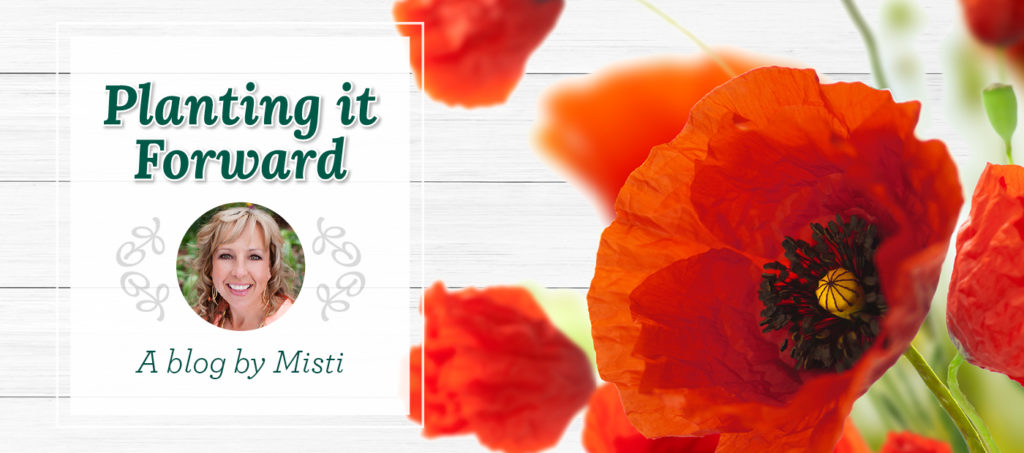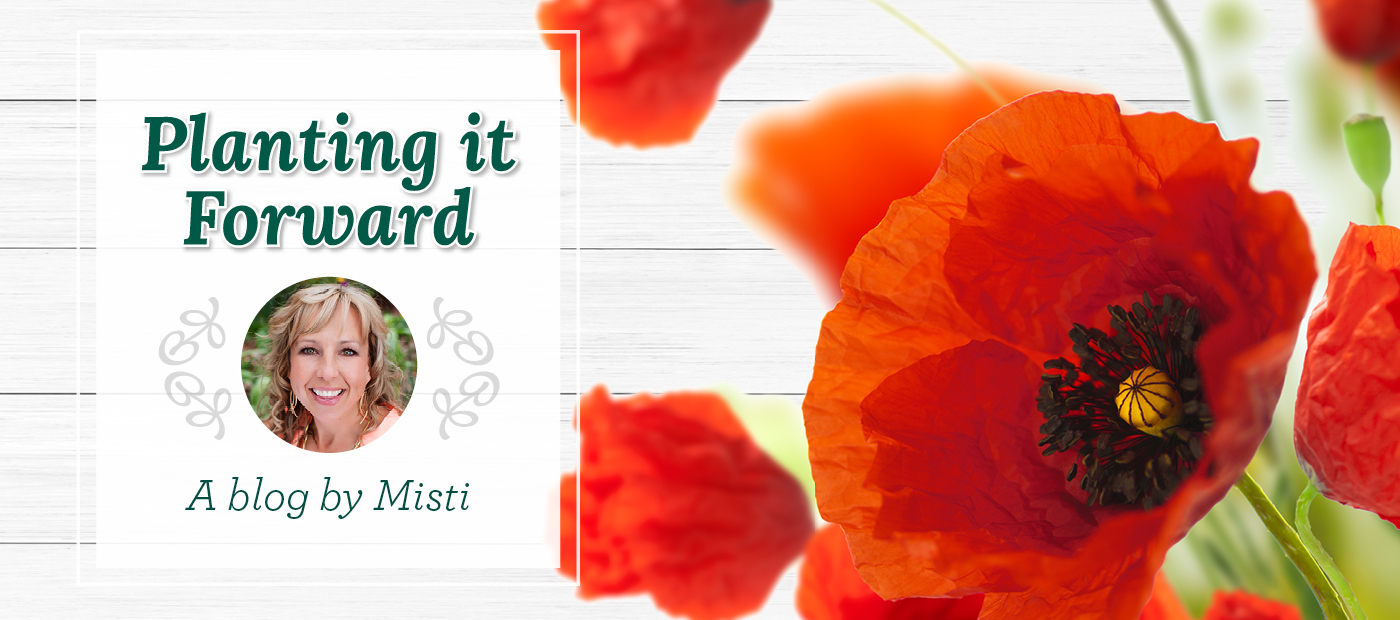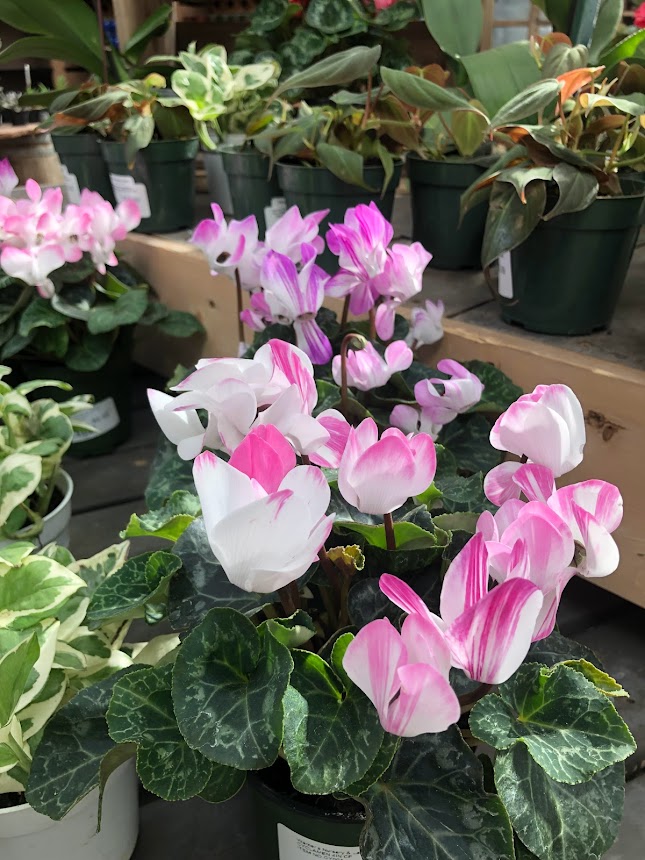
Pachira aquatica, a tropical wetland plant from Central and South America, got its common name “the Money Tree” from a bit of mythology about its origins: a poor man prayed for money and discovered this “odd” plant. After he took it home, he became rich selling the plants he grew from its seeds. Variations of this theme said he was able to make money because the plant wasn’t just one tree – it was five.
 And that’s typically what you’ll see in nurseries – a plant that looks like its trunk is braided; it’s actually the five or sometimes even seven plants that are woven together to make one Money Tree.
And that’s typically what you’ll see in nurseries – a plant that looks like its trunk is braided; it’s actually the five or sometimes even seven plants that are woven together to make one Money Tree.
Although the plant got its start in the Western Hemisphere, it’s also often referred to as a “Chinese” money tree because of its popularity in Asia as a personal or business gift. In Feng Shui, the Money Tree has become a symbol of prosperity and good fortune.
This is a statement plant, bold and eye-catching that deserves a dedicated spot in your home. In fact, you aren’t going to want to move your Money Tree around a lot, as it will start to drop its leaves. If that happens however, please don’t fret; it will recover.
Here are a few more tips on keeping your Money Tree happy:
- Go with medium to bright indirect light.
- Water when this plant is 50-70% dry. They do not have a lot of root mass, so they prefer a dryer pot.
- Be sure to turn your Money Tree each time you water to allow for even growth and leaf development.
- It likes a good misting now and again (remember, it’s a native of the tropics)
- Feed once a month during spring and summer while new leaves are being produced.







